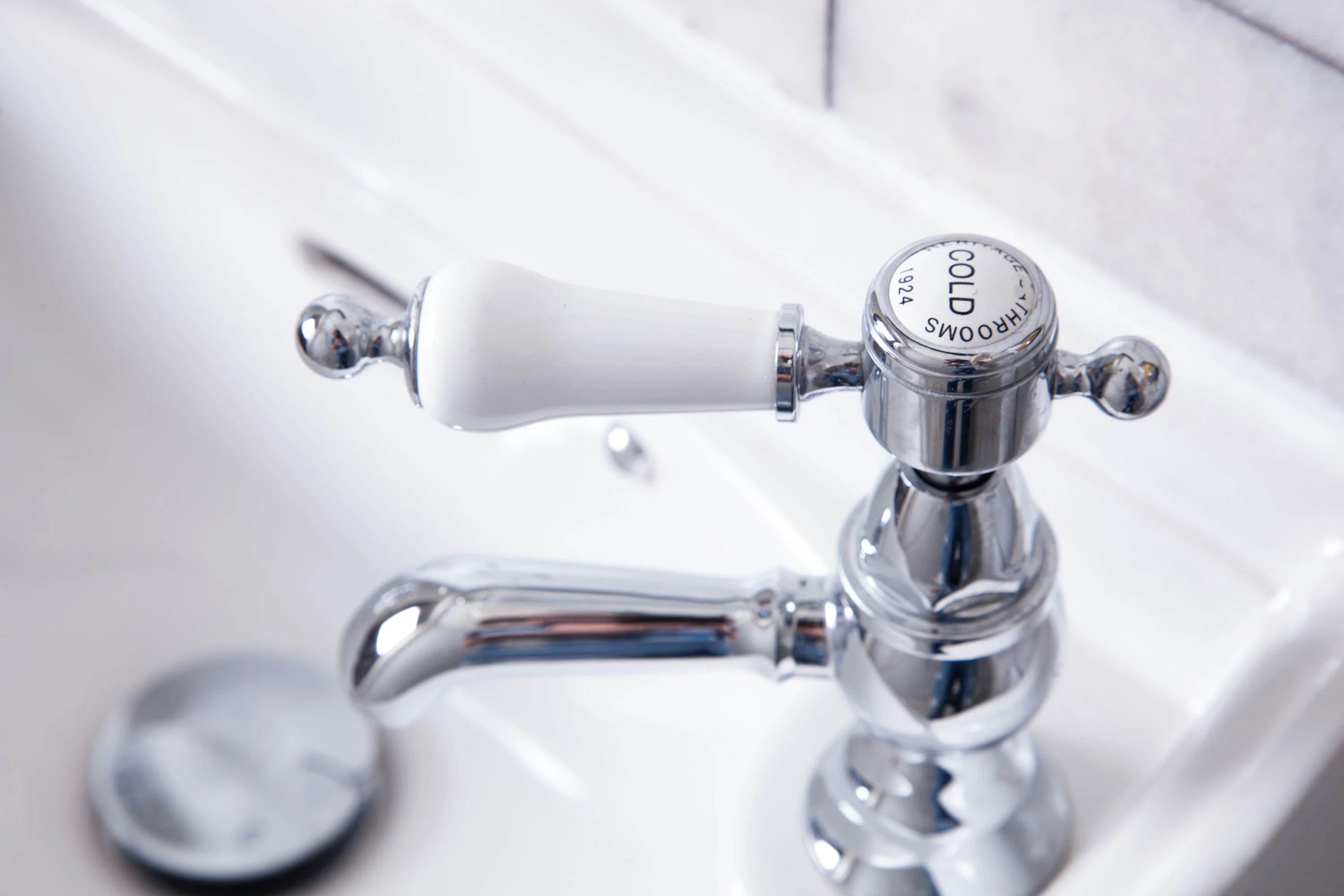Share:
Our bathroom taps are an essential part of our basins and baths. Used daily, whether it's washing our hands, brushing our teeth, or running a bath for a long relaxing soak, taps are certainly put through their paces in this room!
With designs becoming cleverer and more innovative, bathroom taps play a huge part when finishing any bathroom suite. Yet, have you ever wondered how they came to be a permanent fixture in our homes?
Here, The Bathroom Showroom continues with its short informative series. Each month we dive into the history of some of our much-loved bathroom fixtures. This month it’s all about the tap.


We Can Trace the History of the Tap to Ancient Rome
Like many superb inventions, the first taps were invented by the great Romans. As a means of bringing a direct water supply to residents, Romans used aqueducts and canals to direct and store their water. This was performed via lead pipes that transported the water into the public bathhouses and to those few lucky private homes. At the end of these pipes were valves, similar to the ball valves that we continue to use in our taps today.
Unfortunately, the majority of taps in Ancient Rome were constructed using lead. There remain many theories to this day that the Romans' downfall was precisely because of lead poisoning. This was in part due to their reliance on such tap constructions. Yet, there were some lucky Romans who made their taps using gold and lead.
The Dark Ages Yet Again Plunge Taps Into Disrepair
Like all good Roman Inventions, the Dark Ages turned its back on Roman style taps. This was the era which saw hygiene fall by the wayside. This included a huge decay in all water and sewerage works. So, the progress that had been made with those aqueducts and pipes to buildings was destroyed and personal hygiene levels quickly went downhill.
Yet, there was one glimmer of hope in the invention of the tap. Few monasteries continued to use the Roman design while some stately homes kept their taps as a feature on their baths. Meanwhile, those who weren't as lucky reverted to streams and wells for their water supply during these times.

The Late 18th Century and Early 19th Century Signalled Significance Tap Changes
When Agostino Bassi, an Italian Bacteriologist, discovered his germ theory, attitudes towards cleanliness began to change. Once more the design of the tap became relevant.
At the turn of the nineteenth century, Englishman Thomas Grill coined an invention that made it possible to adjust the water flow. This was later labelled the ‘screw tap’ and played a large part in shaping taps and paving the way for them as permanent accessible fixtures.
Towards the end of the 19th century, the popularity of the tap was sealed when Canadian Thomas Campbell further invented the mixer tap after scaling his hands while washing them!
20th Century Saw UK Hot and Cold Taps Remain Legally Separate
Thoms Campbell’s mixer tap invention was born out of a desire to combine hot and cold from a single outlet. Yet, though this significantly changed the use of taps elsewhere, in the UK, the decision was made by law to keep them separate.
Separate hot and cold taps are, to this day, still prominent in most UK homes. The reasoning behind this was merely to ensure that no heated water could contaminate the main water supply. As heated water is stored in a tank, it remains undrinkable. Therefore separate hot and cold taps ensured no confusion here!

Current Day Tap Choices Have Evolved Into Faster, More Functional, and More Stunning Designs
Fast forward to the 21st century and tap designs continue to evolve and boast spectacular additions to all bathroom decor. Building on the foundations of those first Ancient Rome concepts, nowadays taps offer a range of shapes, sizes, and most brilliantly a wide selection of colours to suit individual preferences.
What's more, with both wall and floor mounted taps becoming more popular, this is one historic design that looks set to remain and continue to evolve with us for the foreseeable future.
If you’re considering new taps, book an appointment with The Bathroom Showroom. Experts in all things bathrooms, we can help turn your dream bathroom into a reality.
